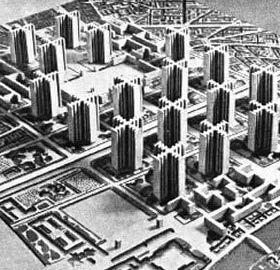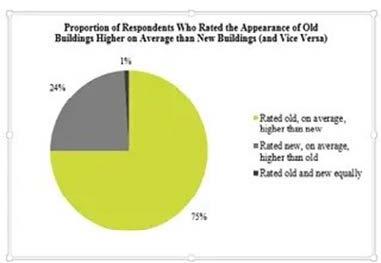FADING FACADES
THE LOSS OF ARCHITECTURAL IDENTITY IN TODAY'S URBAN ENVIRONMENTS
Riya Sthapit a1875906
Sakthivel Eakambaranathan a1846688
REVISED SUMMARY
In earlier works of architecture, beauty was often considered a fundamental aspect with façade details expressing the location and time of a structure. Through decades of changes in various aspects of the design process, a homogenization of architectural expression has occurred. Firstly, we argue that there is a sameness of modern architecture compared to architecture of previous movements. Taking into account the rise of modernism and industrialization as the precedence for this occurrence. We also argue that this decline in architectural beauty and the lack of distinguishing character in the present-day architectural expression indicates a loss of a community’s shared identity. In conclusion, urban design and architecture must prioritize designs that integrate seamlessly with local cultures, fostering a sense of authenticity and belonging. (123 words)
Firstly, we argue that modern architecture often exhibits a sameness when compared to previous architectural movements. This homogeneity can be attributed to the rise of modernism and industrialization as influential precedents. During the modernist movement, architects embraced a minimalist aesthetic characterized by clean lines, geometric shapes, and functional design principles. This standardized approach to architecture aimed to streamline construction processes and promote efficiency, resulting in buildings that often lack individuality and cultural context. Similarly, industrialization facilitated mass production and standardization, leading to the replication of architectural designs across different regions. As a result, many modern buildings share similar features and lack the distinctiveness seen in historical architecture.

Industrialization and post war modernism
Modernist architecture, with its emphasis on simplicity, functionality, and lack of ornamentation, has profoundly influenced construction in Western countries. This ethos, encapsulated by the mantra 'form follows function', shaped iconic structures and ideas by architects like Le Corbusier. However, its impact extends beyond aesthetics, touching on social responsibility and industrialization.
Guillén Mauro’s paper examines how European modernist architects from 1890 to 1930 were influenced by the scientific process and techniques. It suggests that both scientific management and modernist architecture were rooted in engineering principles, leading to the professional reshaping of architecture and the spread of modernist design.[i]
Architecture became a canvas for expressing industrial methodologies, mirroring the rapid industrialization experienced by countries like Britain, the United States, and Spain. [ii] The intertwining of this industrial movement with the aesthetics of modernist architecture has resulted in a heightened focus on efficiency, accompanied by a reduction in architectural detailing.

Sameness in all design
Rationalization's negative impact on architectural aesthetics is evident in the prevalence of standardized housing developments, sacrificing uniqueness for efficiency. This trend is driven by the optimization of resources which also has resulted in transnational aesthetic stereotypes.
Ritzer's concept of "McDonaldization" symbolizes overrationalization, epitomizing predictability, and efficiency. This phenomenon where a highly processed and predetermined process of production extends beyond fast-food chains, influencing diverse industries including design.[iii] The design industry, like McDonald's, is subject to standardization and efficiency-driven practices, contributing to the loss of architectural uniqueness.
Rationalization in modern society prioritizes efficiency over individuality, resulting in standardized housing developments and urban sprawl. Ritzer's concept of "McDonaldization" illustrates the broader implications of over-rationalization, extending its influence on the design industry. Addressing these issues requires inclusive decision-making and innovative approaches to urban planning, prioritizing community needs over efficiency alone.
We also argue that this decline in architectural beauty and the lack of distinguishing character in the present-day architectural expression indicates a loss of a community’s shared identity. How individuals perceive the architecture of their surroundings is fascinating. It involves exploring both the visual perception and mental representation of urban environments, delving into how people navigate and comprehend cities by constructing mental images. This concept of “sense of place” encompasses the emotional and psychological attachment individuals feel towards specific locations or environments, and it is closely related to people’s mental images of the city. Understanding this relationship sheds light on how people interact with and interpret the built environment, influencing their sense of belonging and connection to their surroundings.

The Power of Aesthetics: Fostering Community Satisfaction and Connection
When individuals perceive their surroundings as beautiful, they often experience greater satisfaction with their community and overall quality of life. This happiness stems from feelings of pride, connection, and emotional well-being in aesthetically pleasing environments. Additionally, aesthetic beauty can act as a cohesive force, fostering stronger community bonds and bringing people together.
The general public tends to gravitate towards traditional or familiar architectural styles that provide a sense of comfort, cultural relevance, and harmony with their surroundings. Their preferences prioritize aesthetics, practicality, inclusiveness, and the integration of buildings with the environment.

Survey: Shannon’s " A survey of the public: Preference for old and new buildings, attitudes about historic preservation, and preservation-related engagemen
The Role of Historic Preservation in Tourism and Community Development
This preference for familiar architectural styles contributes to the popularity of nations with numerous historic sites, attracting tourists and boosting the local economy. Governments utilize architecture conservation as a tool to leverage the tourist economy.
Research on public architectural preferences underscores the importance of heritage conservation in preserving collective memory, nurturing community identity, and enhancing the human experience. Addressing the question of ‘Why preserve?’ encompasses discussions on universal aesthetics.”
ENDNOTES
1. Snodgrass Adrian, Coyne Richard.2006. Interpretation in Architecture: Design as a way of thinking. New York: Routledge Publication.
2. Colomina Beatriz, Wigley Mark. 2016. Are We Human?: Notes on an Archaeology of Design. Lars Mul̈ler Publishers.
3. Ching Frank. 2007. Architecture: Form, Space, And Order. New Jersey: John Wiley & Sons, Inc.
4. Ritzer George. 1983. The “McDonaldization” of Society, Journal of American Culture.
5. Rowe Hayley A. 2011. The Rise and Fall of Modernist Architecture. Inquiries Journal/Student Pulse.
6. Interview with Rem Koolhaas. 2006. Evil Can Also Be Beautiful. Spiegel International.
7. Lynch Kevin. 1990. The Image of The City. London: The M.I.T. Press
8. Guillén Mauro F. 1997. Scientific Management’s Lost Aesthetic: Architecture, Organization, and the Taylorized Beauty of the Mechanical. Administrative Science Quarterly 42, no. 4.
9. Seamer Peter. 2019. Breaking Point: The Future of Australian Cities. Nero Books.
10. Shannon Sandra D. 2014. A Survey of The Public: Preference for Old And New Buildings, Attitudes About Historic Preservation, and Preservation-Related Engagement.
